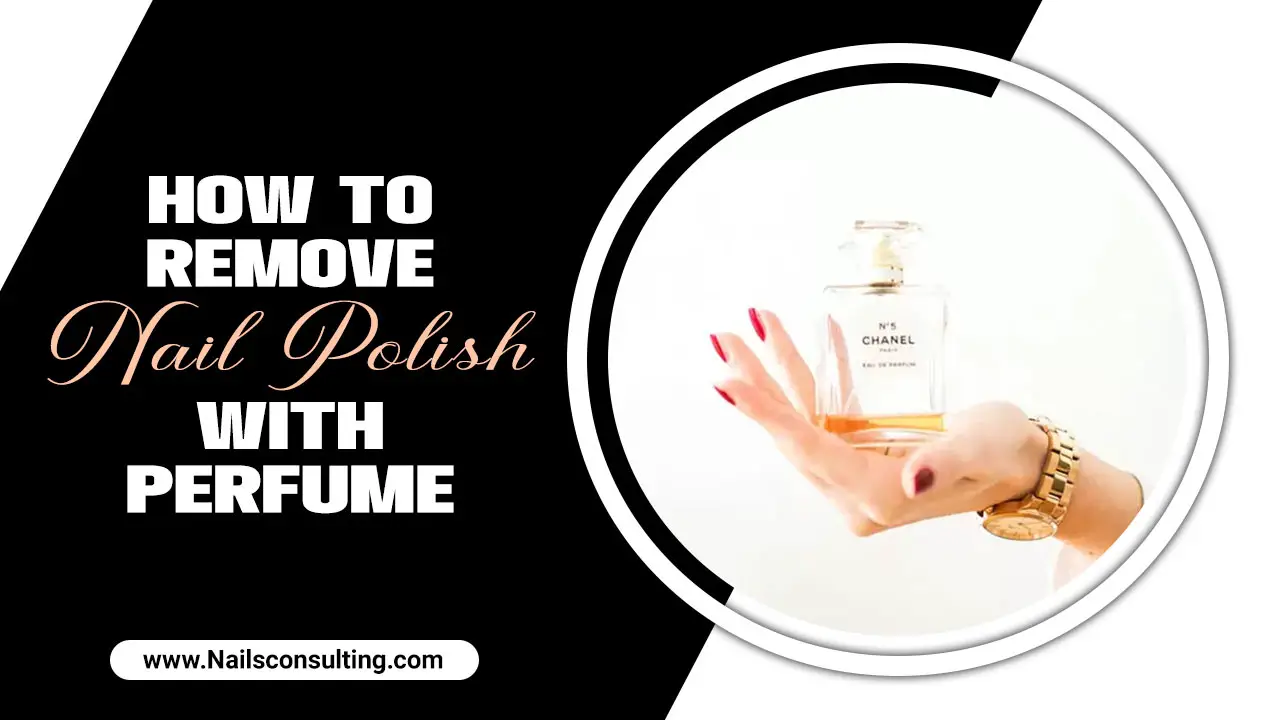Unlock enchanting ocean vibes with underwater sea nail art featuring real shells! This beginner-friendly guide shows you how to create stunning, natural-inspired manicures using shells for a unique, beachy look that’s surprisingly easy to master. Get ready for compliments!
Diving into a new nail art trend can feel a little daunting, especially when it involves delicate natural elements. Maybe you’ve seen those exquisite seashell manicures online and thought, “There’s no way I can do that!” It’s true, bringing a piece of the ocean to your fingertips requires a gentle touch and the right approach. But guess what? You absolutely can create beautiful underwater sea nail art with shells! This is your chance to move beyond basic polish and embrace a truly unique style. Get ready to transform your nails into tiny works of art, inspired by the sea’s natural beauty. We’ll walk through every step, making it simple and fun.
Why Embrace Underwater Sea Nail Art With Shells?
The allure of the ocean is undeniable, isn’t it? There’s something so calming and beautiful about the sea, its colors, and its treasures. Underwater sea nail art with shells brings that magic right to your fingertips. It’s a way to express your love for nature, the beach, or simply a desire for a manicure that stands out from the crowd—without needing a degree in nail art.
This trend is perfect for anyone who:
- Loves a natural, organic aesthetic.
- Wants a unique manicure for a vacation or special occasion.
- Enjoys DIY projects and a creative outlet.
- Seeks a way to add a touch of elegance and whimsy to their look.
Forget complicated airbrushing or intricate freehand designs for a moment. This style focuses on the inherent beauty of miniature shells, letting them be the stars of your manicure. It’s about embracing texture, natural shapes, and a touch of the extraordinary.
Your Essential Toolkit for Sea Shell Nails
Gathering the right supplies is the first step to success. Don’t worry, you don’t need a professional salon’s worth of equipment! Here’s what you’ll need to create your stunning underwater sea nail art with shells:
Nail Prep Essentials
- Nail Polish Remover: To start with a clean canvas.
- Cuticle Pusher (Orange Stick or Metal): To gently push back cuticles.
- Nail Buffer: For smoothing the nail surface.
- Nail File: To shape your nails.
The Star of the Show: Shells!
- Miniature Seashells: Look for tiny, flat, or slightly curved shells. You can find these at craft stores, specialty nail art supply shops, or online marketplaces. Ensure they are cleaned and safe for crafting. Some common choices include crushed abalone, tiny cowrie shells, or fragments of larger shells.
- Shells Sourced Responsibly: It’s important to source shells ethically. Avoid taking shells from live creatures or protected beaches. Many crafters use shells that have been naturally collected or are byproducts of other industries. For more information on responsible beachcombing, check out resources from organizations like the National Oceanic and Atmospheric Administration (NOAA).
Application & Finishing Touches
- Base Coat: To protect your natural nails and help polish adhere.
- Your Chosen Nail Polish Colors: Think ocean blues, sandy beiges, pearly whites, or even deep sea greens.
- Tweezers (Fine-Tipped): Crucial for picking up and placing the tiny shells precisely.
- Clear Nail Gel or Top Coat: A strong, durable top coat is essential for sealing the shells. Gel top coats are highly recommended for longevity and a smooth finish.
- UV/LED Nail Lamp: If you’re using gel polish or gel top coats, this is a must-have to cure the gel.
- Small Brush or Dotting Tool: For applying gel or top coat precisely around the shells.
Step-by-Step: Crafting Your Underwater Sea Nail Art with Shells
Ready to get creative? Follow these simple steps to achieve a gorgeous seashell manicure. It’s easier than you might think!
Step 1: Prepare Your Nails
Just like any great manicure, starting with properly prepped nails is key. Clean your nails thoroughly with polish remover, even if you don’t have old polish on. Gently push back your cuticles using an orange stick or cuticle pusher. Lightly buff the surface of your nails to create a smooth base for polish and to help it adhere better. Finally, shape your nails to your desired length and style.
Step 2: Apply Base Coat and Color
Apply a thin layer of your base coat and let it dry completely. This protects your nails and helps your polish last longer. Then, apply your chosen nail polish colors. You can go for a classic ocean blue, a shimmering seafoam green, a sandy nude, or even a gradient effect to mimic the ocean depths. Two thin coats usually provide the best coverage. Ensure each coat is fully dry before moving on. If you’re aiming for a specific underwater effect, consider layering different shades or adding a subtle shimmer polish over your main color.
Step 3: The Art of Shell Placement
This is where the magic happens! Using your fine-tipped tweezers, carefully pick up a miniature shell. Apply a small bead of your clear gel top coat (or even a strong nail glue if you aren’t using gel) to the nail where you want to place the shell. Gently press the shell into the gel or glue. You can place them along the cuticle, at the tip, or scattered across the nail for a seabed effect. Don’t overdo it; a few well-placed shells can make a big impact. Allow the glue to dry or cure your gel under the UV/LED lamp if you used gel.
Step 4: Build and Encapsulate
Once your first shell(s) are securely in place, it’s time to build up the design and create a smooth, protective layer. Using your small brush or dotting tool, carefully apply another layer of clear gel top coat around the shells, ensuring the edges are covered. You want to create a smooth surface where the shells feel integrated into the nail, not just stuck on top. This layer also helps prevent the shells from snagging. If you want a more pronounced 3D effect or have larger shell pieces, you might need to apply multiple thin layers of gel, curing each layer individually, to fully encapsulate them. The goal is to make the surface as smooth as glass.
Step 5: The Grand Finale – Finishing Top Coat
After you’ve placed all your shells and are happy with the placement and encapsulation, apply a final, generous layer of your clear gel top coat over the entire nail. Make sure to cap the free edge of your nail too, for extra durability. This will seal everything in, add incredible shine, and give your underwater sea nail art with shells that professional, salon-quality finish. Cure this final layer under your UV/LED lamp according to the lamp’s instructions. If you used regular nail polish and top coat instead of gel, ensure the top coat is completely dry and apply an extra layer or two for added strength and shine. Be patient; it’s better to have your nails dry a little longer than risk smudging.
Tips for Perfecting Your Seashell Manicure
Creating beautiful underwater sea nail art with shells is a skill that improves with practice. Here are some pro tips to help you achieve flawless results every time:
- Start Simple: Don’t try to place too many shells on your first attempt. Begin with one or two accent nails and keep the shell placement minimal and strategically impactful.
- Shell Size Matters: Opt for very small, delicate shells for a sophisticated look. Larger shells can look bulky and are more prone to snagging.
- Flat is Best: Flatter shells are easier to apply and encapsulate smoothly. If you have slightly curved ones, try to place them on a flatter part of the nail.
- Cleanliness is Crucial: Ensure shells are thoroughly cleaned and dried before application to avoid any unwanted debris or odors.
- Gel is Your Friend: For the smoothest, most durable finish, gel top coats are highly recommended. They provide excellent adhesion and encapsulation for shells.
- Work in Thin Layers: Whether it’s polish or gel, thin layers are always better than thick, gloopy ones. They dry/cure faster and are less likely to smudge or lift.
- Don’t Forget the Edges: Always cap the free edge of your nail with polish and top coat. This is crucial for preventing chipping and lifting, especially with accents like shells.
- Experiment with Colors: Try layering shimmery or iridescent polishes under your shells to mimic the way light catches ocean treasures.
- Practice Makes Perfect: Don’t get discouraged if your first try isn’t magazine-worthy. Keep experimenting, and you’ll find your rhythm.
Understanding Shells: Types and Their Nail Art Potential
Not all shells are created equal when it comes to nail art. The shape, size, and texture of the shell play a big role in how it looks and how easy it is to apply. Understanding these differences can help you choose the best shells for your underwater sea nail art with shells.
Common Shell Types for Nail Art
Here’s a look at some popular options and what makes them suitable for manicures:
| Shell Type | Description | Nail Art Suitability | Tips for Use |
|---|---|---|---|
| Crushed Abalone/Mother of Pearl | Iridescent, lustrous fragments that shimmer with color. | Excellent for creating a subtle, ethereal ocean glow. Can be used as full nail accents or mixed with glitter. | Can be mixed into gel or applied individually. Pairs well with sheer polishes. |
| Tiny Cowrie Shells | Small, smooth, oval-shaped shells with distinctive patterns. | Perfect for creating a bohemian beach vibe. Their size makes them manageable for accent nails. | Apply with tweezers and encapsulate carefully. Can be placed strategically along the cuticle or tip. |
| Mussel Shell Fragments | Irregularly shaped pieces, often with a strong blue or green hue. | Great for adding a pop of color and a natural, slightly rough texture. | Can be broken into smaller pieces for easier application. Ensure edges are smooth after breaking. |
| Snail Shell Fragments | Small, spiraled pieces that offer unique texture and shape. | Adds a touch of intricate detail and can mimic natural sea formations. | Use smaller pieces for best results. Can be challenging to lay flat, so be prepared to build gel around them. |
| Micro-Beads/Seed Beads (Shell-Inspired) | Tiny beads made from shell material or designed to mimic their appearance and texture. | Fantastic for creating a subtle, shimmering effect or a textured “sandy” look. | Can be applied using a wet polish or gel method. Great for filling in larger gaps or creating a cohesive texture. |
Considerations for Shell Sourcing and Preparation
When you’re gathering your shells, keep a few things in mind:
- Cleanliness: Always wash and thoroughly dry any natural shells you plan to use. This removes dirt, salt, and potential bacteria.
- Size is Key: For nail art, smaller is generally better. You want shells that are proportionate to the nail and can be easily covered and smoothed.
- Flatness: Shells that lay relatively flat will be easier to apply and encapsulate without creating awkward bumps.
- Ethical Sourcing: As mentioned, it’s important to be mindful of where your shells come from. Look for shells that have been naturally washed ashore and aren’t from living organisms or protected areas. Organizations like the Ocean Conservancy offer resources on marine life protection and responsible practices.
Maintaining Your Shell Manicure
Once your stunning underwater sea nail art with shells is complete, you’ll want it to last! Proper care will keep your manicure looking fresh and beautiful.
Daily Care
- Wear Gloves: When doing chores, washing dishes, or using cleaning products, wear rubber gloves. This protects your nails from harsh chemicals and excessive moisture, which can weaken the polish and glue/gel.
- Avoid Using Nails as Tools: Resist the urge to use your nails to open cans, scrape off labels, or perform other tasks that could chip or break them.
- Moisturize: Keep your cuticles and hands hydrated with a good cuticle oil or hand cream. Healthy skin around your nails helps maintain the overall health of your manicure.
Longevity Tips
- Regular Top Coats: For non-gel manicures, reapplying a clear top coat every few days can help refresh the shine and add an extra layer of protection.
- Be Gentle: While gel encapsulation makes the shells quite secure, they are still delicate. Be mindful of bumping them against hard surfaces.
- When to Say Goodbye: Even the best manicures have a lifespan. If you notice significant lifting, chipping, or damage to the shells, it’s time to remove them and start fresh.
Troubleshooting Common Seashell Nail Art Issues
Even with the best intentions, you might encounter a hiccup or two. Here’s how to fix them:
Issue: Shells Snagging or Lifting
Solution: This usually means the shell isn’t fully encapsulated. You need more clear gel or top coat to build a smooth, protective layer. Carefully apply more gel around the edges of the shell, feathering it out onto the surrounding nail polish. Cure thoroughly. If using non-gel, allow ample drying time between thin layers of top coat.
Issue: Uneven Surface
Solution: If the surface around the shell feels bumpy, it means the gel or top coat wasn’t applied evenly. For gel, you can try gently buffing down the very peak of the bump (careful not to go through the gel and into the shell or polish!) and then applying another thin, smooth layer of gel to even it out, curing each layer. For non-gel, repeat the top-coating process in thin layers, ensuring each cures fully.
Issue: Shells Falling Off
Solution: This can happen if the adhesive (glue or gel) wasn’t strong enough or wasn’t cured properly. If using non-gel, you might need to carefully remove the fallen shell, clean the nail area, and reapply with a stronger nail glue or a fresh application of top coat and re-pin the shell. If using gel, ensure you’re using a high-quality gel product and curing for the recommended time under your lamp. Sometimes, a nail might just not have good adhesion; you might need to reapply the base coat and polish before trying to reattach the shell.
Issue: Shells Looking Dull
Solution: The shine of the shell can be dulled by the polish or gel. A generous final layer of a high-gloss gel top coat is usually all that’s needed to bring back the luster. Ensure this final layer is cured properly.
Frequently Asked Questions About Underwater Sea Nail Art With Shells
What kind of shells can I use for nail art?
You can use small, natural seashells like tiny cowrie shells, abalone fragments, or pieces of other shells. Craft stores and online suppliers offer miniature shells specifically for nail art. Always choose ethically sourced shells that are clean and not too bulky.
Do I need a UV/LED lamp for seashell nails?
A UV/LED lamp is essential if you are using gel polish or a gel top coat, which is highly recommended for durability and a smooth finish. If you are using regular nail polish and top coat, you won’t need a lamp, but the manicure will be less durable and may not achieve the same smooth encapsulation.
How do I make sure the shells don’t fall off?
The key is proper encapsulation using a strong gel top coat or multiple layers of durable nail glue/top coat. Ensure the shells are fully covered and sealed, especially around the edges. Curing gel properly under a lamp is crucial for a strong bond.
Can I put real shells on my nails if I have short nails?
Yes! Miniature shells are perfect for short nails. Opt for very tiny, delicate fragments or pieces. The key is to select sizes that are proportionate to your nail length and to place them strategically, often on an accent nail, rather than covering the entire nail.
How do I remove seashell nail art?
If you used gel, you’ll need to soak them off following standard gel removal procedures (typically with acetone remover and foil wraps). If you used regular nail polish and glue, soak your nails in acetone remover. You may need to gently file away some of the top layers before soaking.
Are there any risks associated with wearing real shells on nails?
The primary risk is snagging or breaking the shells, which could potentially damage the underlying nail. Ensuring they are well-encapsulated and smooth with gel or top coat minimizes this risk. Also,




